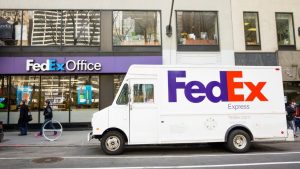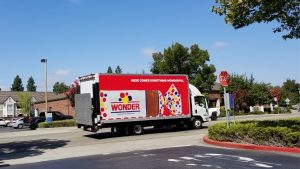A high cash flow business is one that allows you to enjoy a powerful return on investment.
I am talking about businesses that will produce reliable cash flow each month that far exceeds the returns you can get by investing in more traditional income producing assets like CDs, bonds, and yes, even stocks (which have averaged around 10% over the last century).
The good news is that there are plenty of options to choose from.
I have further curated the options by selecting businesses that have a high cash flow while not being incredibly work-intensive. In other words, these businesses are (or can be structured to be) passive or semi-passive to run.
So these eight high cash flow businesses are the financial equivalent to having your cake and eating it too. It doesn’t get better than that, no?
On that note, let’s get into it!
The information contained in this post is for informational purposes only. It is not a recommendation to buy or invest, and it is not financial, investment, legal, or tax advice. You should seek the advice of a qualified professional before making any investment or other decisions relating to the topics covered by this article. All investments carry some degree of risk and you are never guaranteed any returns.
1. Buy a Profitable Blog

Blogs are probably my favorite high cash flow business. The strategy is simple:
Buy an existing money-making blog and collect checks.
Starting a blog is a lot of hard work and it can take a long time to make money. I am not talking about that. You want to buy a blog that has all of the articles written and is producing steady cash flow. Doing this can be a perfect way to get passive income that produces killer cash flow every month.
Cash Flow Analysis:
How good is the potential cash flow? This table shows blogs that were for sale on Empire Flippers (a leading website for buying and selling online businesses) on the day that I wrote this article.
Side Note: Empire Flippers is my go to resource when I am shopping for profitable online businesses. They professionally vet each listing, so they aren’t full of scammy businesses like some other platforms but they still have enough scale to offer a ton of options.
But let’s get back on topic. Take a look at the annualized cash flow percentage for these blogs!
|
Website Description |
Listing Price |
Annual Cash Flow |
Cash Flow Percentage |
|
Music/Electronics Blog |
$118,804 |
$35,640 |
29.9% |
|
Medical/Supplements Blog |
$154,700 |
$46,416 |
30.0% |
|
Culinary Blog |
$173,258 |
$41,580 |
23.9% |
|
Home Blog |
$201,584 |
$62,028 |
30.7% |
|
Crypto Blog |
$8,563,858 |
$1,868,484 |
21.8% |
|
Hobbies Sports Blog |
$39,435 |
$11,832 |
30.0% |
|
Home/Equipment Blog |
$40,463 |
$15,168 |
37.4% |
|
Home, Bed & Bath Blog |
$43,487 |
$11,858 |
27.2% |
|
Apparel & Accessories Blog |
$49,731 |
$14,208 |
28.5% |
|
Personal Care Blog |
$71,878 |
$17,256 |
24.0% |
The average cash flow percentage here works out to 28.3%! That’s pretty awesome for what will likely be an almost completely passive investment.
Note: I did not cherry-pick these listings. I just sorted the listings by selecting “display advertising” as the monetization channel. I then picked the first ten listings that came up.
You can, of course, go to Empire Flippers and do the same thing to get the latest data. You probably won’t get the same listings, but the cash flows should be in a similar range.
Of course, you can juice the returns even further if you choose to finance the purchase of your blog. Flippa.com (another popular online business marketplace) offers this option on their website.

Want to learn more about buying a blog, including some of the key risks you need to address? Check out my article here:
Buying a Blog for Passive Income
If you don’t have the funds to buy and blog, but still want to learn more about how to get started, check out my article on How to Start a Blog From Scratch.
I cover all of the key areas you need to know, including how to set up your website and most importantly, my best tips for writing great articles, getting traffic to your blog, and monetizing that traffic.
If you don’t have the time or inclination to do this on your own but don’t want to spend the money required to buy an existing blog (which can be a lot, especially if you want one that makes real money), you can hire a service to create a website for you. Make Lemonadeis a UK based firm that specializes in this.
I have used their content writing service to help me expand my blogs when I was running short on time, but they do offer a full service model, where they will create your website for you from start to finish and include content that has gone through their rigorous keyword research process.
Check them out here if you want to learn more.
2. Laundromats

Laundromats can yield cash flows that easily clear 20%. On top of that, they can be operated in a mostly passive way.
After all, the machines are doing the hard work of washing and drying the clothes (with your customers doing the work of loading and unloading the clothes). You just need to have a repair tech on call to take care of the machines when they break down and someone to clean the laundromat each day and handle the occasional customer issues that may arise from time to time.
Of course, you will probably want to swing by every so often to collect your money! The bottom line is that it is not a particularly complicated business, but throws off a ton of cash flow.
Cash Flow Analysis:
So what type of cash flow can you get from laundromats? Let’s take a sample of laundromats from bizbuysell.com (one of the leading online websites for buying and selling businesses) and find out.
|
Description of Laundromat |
Price |
Cash Flow |
Cash Flow Percentage |
|
Phoenix Laundromat (Semi-Absentee Owner) |
$220,000 |
$60,000 |
27.2% |
|
Kings County (NY) Laundromat (With Staff) |
$250,000 |
$150,000 |
60% |
|
Queens County (NY) Laundromat |
$175,000 |
$100,000 |
57.1% |
|
Brooklyn Laundromat (with new machines) |
$650,000 |
$231,120 |
35.5% |
|
Two location Texas Laundromats |
$1,000,000 |
$260,930 |
26% |
|
Rhode Island Laundromat |
$325,000 |
$65,000 |
20% |
|
Brooklyn Laundromat (121 machines!) |
$699,000 |
$241,789 |
34.6% |
|
Philadelphia Laundromat (Hi-Tech) |
$586,000 |
$198,000 |
33.7% |
|
Cleveland Laundromat (Semi-Absentee Owner) |
$585,000 |
$197,000 |
33.6% |
|
Denver Laundromat (Hi-Tech) |
$695,000 |
$196,950 |
28.3% |
The cash flow percentages average out to 29.6%. As with other examples I provide, you can go to bizbuysell.com and confirm this. Just eyeballing the listings should give you a pretty good sense of what type of returns laundromats can offer.
As I mentioned above, the process is mostly automated, but not completely. There are things you will need to do to successfully run this business as an absentee owner. If you are interested in learning how to start a laundromat, check out my article on starting a laundromat in six easy steps.
3. FedEx Routes

Did you know that you could buy a FedEx delivery route?
It can be a highly profitable business and, if you structure it right, it can generate passive cash flows of over 20%. The business is very simple. You get a bunch of packages from FedEx each morning. Your job is to deliver those packages to locations within your territory.
The great thing is that your discrete little piece of the FedEx delivery process is easily outsourced.
In fact, most owners do this. They usually own many routes, so they are not driving a truck and making deliveries. They hire drivers and put in place managers that oversee the deliveries. Once you have good managers and reliable drivers in place, the day-to-day operations of this business can be run without your involvement.
Cash Flow Analysis:
So how good are the cash flows of a FedEx delivery business?
Let’s take a look. The information is from bizbuysell.com.
|
Description of FedEx Route |
Price |
Cash Flow |
Cash Flow Percentage |
|
6 FedEx Routes – Meridian, MS |
$650,000 |
$155,000 |
23.8% |
|
7-11 FedEx P&D Routes – North Carolina (full time manager) |
$1,175,000 |
$279,156 |
23.7% |
|
8-12 FedEx P&D Routes – North Carolina (full-time manager) |
$1,485,000 |
$370,240 |
24.9% |
|
18 FedEx P&D Routes – North Tampa (2 managers) |
$1,900,000 |
$475,000 |
25.0% |
|
6 FedEx P&D Routes – McComb, MS |
$600,000 |
$139,811 |
23.3% |
|
5 FedEx P&D Routes – Knoxville, TN |
$425,000 |
$91,181 |
21.4% |
|
6 FedEx P&D Routes – Rapid City, SD |
$495,000 |
$109,984 |
22.2% |
|
20 FedEx Routes – Wenatchee/Omak, WA (full time manager) |
$1,549,000 |
$514,313 |
33.2% |
|
12 FedEx P&D Routes – Alabama |
$950,000 |
$300,404 |
31.6% |
|
FedEx Line-Haul – Sacramento, CA |
$1,250,000 |
$398,000 |
31.8% |
The average cash flow percentage for these FedEx routes is 26.1%.
What I love about this option is that you get to partner with a massive company like FedEx and get all of the benefits of their branding, marketing, and infrastructure.
You don’t need to worry about getting customers, staving off competition, or really anything else that most business owners stress over. All you need to do is make sure the deliveries get done on time everyday.
If you want to learn more about this business, check out my beginner’s guide to owning FedEx routes for passive income.
4. Bread Routes

Like a FedEx route, you can buy a bread route that covers a territory. I am talking about selling major brands like Pepperidge Farm, Sara Less, Wonder, Nature’s Own, etc. to huge retailers like Walmart and Target.
Here’s how it works.
Once you own that territory, you can sell bread to the various retailers in that area and pocket a commission for each sale. Best of all, you can have drivers run these routes for you and operate this as an absentee-run business.
Cash Flow Analysis:
Now let’s get down to the cash flow.
Here are bread routes that I found on Routesforsale.net. There are a bunch of other places where they sell bread routes (and for different brands), but I just used this site because it had a large selection of routes.
|
Description of Bread Route |
Price |
Cash Flow |
Cash Flow Percentage |
|
Arnold & Bimbo Bread – Blythe, CA |
$104,000 |
$58,552 |
56.3% |
|
Arnold & Bimbo Bread – New London County, CT |
$115,000 |
$71,330 |
62.0% |
|
Arnold & Bimbo Bread – Sebring, FL |
$220,000 |
$90,222 |
41.0% |
|
Arnold & Bimbo Bread – Daytona Beach, FL |
$177,000 |
$78,992 |
44.6% |
|
Arnold & Bimbo Bread – Atlanta, GA |
$200,000 |
$74,908 |
37.4% |
|
Arnold & Bimbo Bread – Dalton, GA |
$131,500 |
$66,971 |
50.9% |
|
Arnold & Bimbo Bread – Buford, GA |
$299,000 |
$129,011 |
43,1% |
|
Arnold & Bimbo Bread – Perry GA |
$199,000 |
$74,308 |
37.3% |
|
Arnold & Bimbo Bread – Coffee County, GA |
$209,000 |
$120,796 |
57.7% |
|
Arnold & Bimbo Bread – Gilmer County, GA |
$120,000 |
$59,488 |
49.5% |
The average cash flow percentage for these bread routes is a whopping 46.0%!
Now, you should temper your expectations here because most of these routes are likely operated by the owner. If you want a more passive income business, you will have to hire drivers to run the routes. Of course, in that case, the cash flow will go down, but you should still have a lot of room to play with.
To learn more about getting started in this business, read my article on buying bread routes for passive income.
5. Vending Machines

Owning a vending machine route can be an amazing passive cash flow business.
You just place it in a high-traffic location and make money every time someone buys something from your machine. The cost to get started varies, with a simple gumball machine costing only around $200 to a more expensive vending machine running between $3,000 to $5,000.
Still, that’s far less expensive than most businesses and it’s a terrific way to start generating some stellar cash flow.
The only part of this that requires some work is restocking and collecting money from the machine, but you can easily outsource this function.
Cash Flow Analysis:
I could not find a lot of great data to analyze the cash flow of a single vending machine. But I did find some solid data on vending machines businesses.
As with other examples, I searched bizbuysell.com for vending machine businesses and selected a representative sample.
|
Description of Vending Machine Route |
Price |
Cash Flow |
Cash Flow Percentage |
|
Cape Cod Vending Business (8 machines) |
$27,000 |
$9,943 |
36.8% |
|
Texas Vending Business (7 machines) |
$60,000 |
$10,976 |
18.2% |
|
Maryland Vending Business (132 machines) |
$125,000 |
$74,414 |
59.5% |
|
Portland Vending Business (12 machines) |
$125,250 |
$147,500 |
117.7% |
|
Texas Vending Business (8 machines) |
$15,000 |
$6,645 |
44.3% |
|
Tampa Vending Business (10 machines) |
$120,000 |
$60,000 |
50.0% |
|
Florida Vending Business (2 employees) |
$250,000 |
$85,070 |
34.0% |
|
Los Angeles Vending Business (120 machines) |
$180,000 |
$69,000 |
38.3% |
|
Entire University Vending Route (26 machines) |
$65,000 |
$35,000 |
53.8% |
|
Silicon Valley Vending Route (31 machines) |
$149,000 |
$60,000 |
40.2% |
The average cash flow percentage of these vending machines routes is 49.2%.
As with bread routes, most of these businesses probably have the owners running the routes. If you want a more passive operation, you will need to hire employees to run the routes for you and that will eat into the cash flow.
For more details on how to start a vending machines business, check out my beginner’s guide on how to start a vending machine route for passive income.
6. ATM Machines

Like vending machines, this type of business involves placing ATMs in high traffic areas and receiving a fee every time someone makes a withdrawal.
You can get started on a pretty small budget, though. The average new ATM costs between $2,300 to $3,000.
What’s great about ATMs is that they are even simpler to operate than a vending machine route. You don’t have to worry about buying 17 different types of snacks and drinks and lugging them around in your van. There is only one type of inventory you need: cash.
Most operators run their routes replenishing cash in their machines as needed, which is like a 15 minute job per ATM. But if you own a ton of ATMs and want to outsource this, there are armored car services that can restock your ATMs with cash for a fee.
Cash Flow Analysis:
Turns out that the cash flow for ATM businesses is actually pretty amazing.
I did a search for ATM businesses on Bizquest and came up with the following:
|
Description of ATM Route |
Price |
Cash Flow |
Cash Flow Percentage |
|
22 ATMs in Portland |
$40,000 |
$26,000 |
65% |
|
14 ATMs in Minneapolis |
$53,851 |
$36,500 |
67.7% |
|
98 ATMs in New York |
$566,500 |
$245,000 |
43.2% |
|
8 ATMs in Dallas |
$59,700 |
$36,408 |
60.9% |
|
15 ATMs in Springfield, MO |
$40,000 |
$20,500 |
51.25% |
|
5 ATMs in New York |
$21,200 |
$14,000 |
66% |
|
33 ATMs in Los Angeles |
$500,000 |
$150,000 |
30% |
|
15 ATMs in Los Angeles |
$180,000 |
$60,000 |
33.3% |
|
92 ATMs in Los Angeles |
$1,110,000 |
$370,000 |
33.3% |
|
20 ATMs in Los Angeles |
$298,000 |
$100,492 |
33.7% |
That works out to an astonishing 48.43% cash flow percentage!
If you are interested in finding out more about ATM businesses (and I don’t blame you – those are compelling numbers), check out my beginner’s guide to ATMs for Passive Income.
If you want to make this even more passive and turn-key, you may want to consider ATM franchises (and even Bitcoin ATM franchises, which are a thing). Click here for my article on the best ATM franchises in the US.
7. Rent Out Cars

This is a pretty cool one.
You can rent out your car on Turo.com and make great passive income. One option is to use your existing car and rent it out when you don’t need it (perhaps on the weekends).
In that case, your ROI is basically infinite.
But you can also buy a car just for this purpose and rent it out. This a legitimate business model and there are people who own fleets of cars and rent them out through Turo.
Cash Flow Analysis:
Turo has a tool called the Carculator, which allows you to type in the year, make and model of your car. The Carculator will then give you an estimate of how much you can make renting out that car on Turo. I love these types of tools because they give you amazing data!
I typed in a 2017 Toyota Prius Three Touring and the Carculator indicated that I could earn $388 per month.
That works out to $4,656 per year.
I then hopped onto cargurus and searched for a Toyota with that same year and model. They all seemed to hover around the $19,000 range. So if you take $4,656 and divide it by $19,000, you get a potential cash flow percentage of 24.5%.
Now I just randomly typed in a year, make and model for this example. But you may want to play around with the Carculator and type in different car models to see what you can earn. I have no doubt that you can find car models that can generate better ROIs.
8. Real Estate

Investing in real estate can be a great way to achieve outstanding profits, especially if you use debt to magnify your returns. I own nine rental properties and this form of investing allowed me to make my first million.
It is a tried and true path toward wealth.
Now, this particular business may not generate the same straight up cash flows of the other businesses, but real estate investing does generate overall returns that can rival some of the other businesses. It also provides a host of other benefits, such as tax breaks and general stability that can be really attractive to many investors.
There is a reason why Andrew Carnegie famously stated:
Ninety percent of all millionaires become so through owning real estate. More money has been made in real estate than in all industrial investments combined.
ROI Analysis:
Let’s take an example of how you can use real estate to make over a 20% ROI:
Sally has $15,000.
She buys a rental property worth $100,000. In today’s market, you can finance a rental property with just 15% down, so that’s what she does.
Note: you should have a bit of money set aside for repairs and such, but I want to keep this example simple.
If we assume she can get an interest rate of 3.5% on a 30 year mortgage (which was the market rate when I wrote this) and an annual appreciation rate of 3.7% (which is the appreciation rate of homes over the past 20 years), then after 10 years, we see the following results:
Property Value: $143,809
Loan Amount: $65,813
Equity: $77,996 (we began with $15,000 of equity due to down payment)
Annualized ROI: 17.9%
It gets better. That ROI does not take into account the “cash flow” that Sally has received during the year. “Cash flow” means rent minus expenses (such as mortgage, insurance, taxes, etc.). Cash flow varies, but my properties tend to cash flow between $100 and $200 per month.
Let’s take the average and say she makes $150 in cash flow per month. That equals $1,800 per year and $18,000 over 10 years.
If you add that $18,000 of cash flow to the mix, you get an annualized return of 20.4%.
That return would be even higher if she had invested that $18,000 in cash flow over the years, but I think you get the point.
What’s even better is that rental properties are generally very stable investments and can be semi-passive investments. For that reason, many people hold on to their rentals for decades. It’s a terrific way to generate high returns over the long term, without huge stress or massive effort.
If you want to learn more, check out my article on how to get started investing in rental properties.
3 Bonus Ideas

To keep this article to a manageable length, I focused on only 8 high cash flow businesses, but there are other options that you can explore.
If you want to look at some more ideas, I have written in-depth articles on the following businesses that can all generate high cash flows:
Self Storage Businesses: Start a Passive Self Storage Business in 7 Easy Steps
Automatic Car Washes: Beginner’s Guide to Passive Income Automatic Car Washes
Bounce Houses: How to Start a Bounce House Business in 4 Easy Steps
Conclusion
So there you have it – 8 high cash flow businesses that have the added benefit of generating passive income.
This article gave examples of existing businesses that generate high cash flows, but if you want to learn more about how to start a business from scratch, check out my ultimate beginner’s guide to starting a business. I take you through each of the 14 steps required to create a new small business, from ideation all the way to launch. Definitely worth a read!

